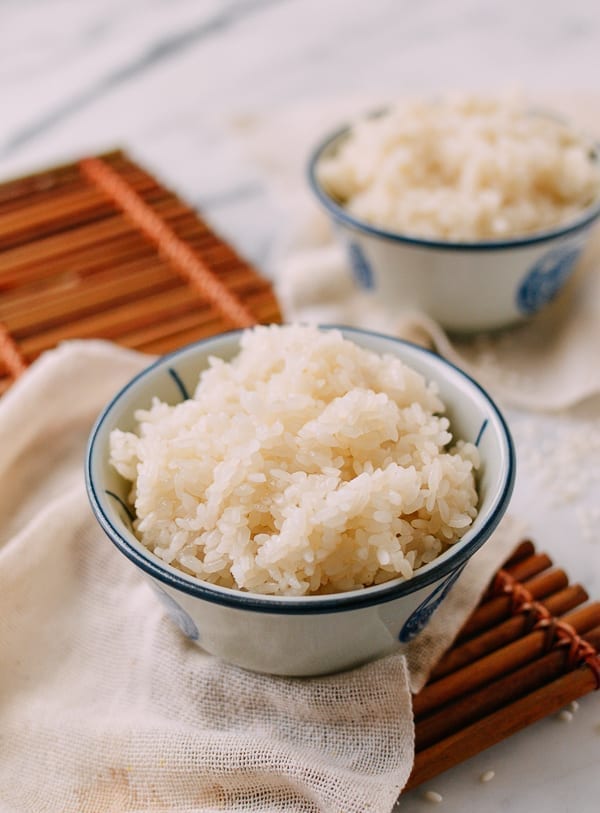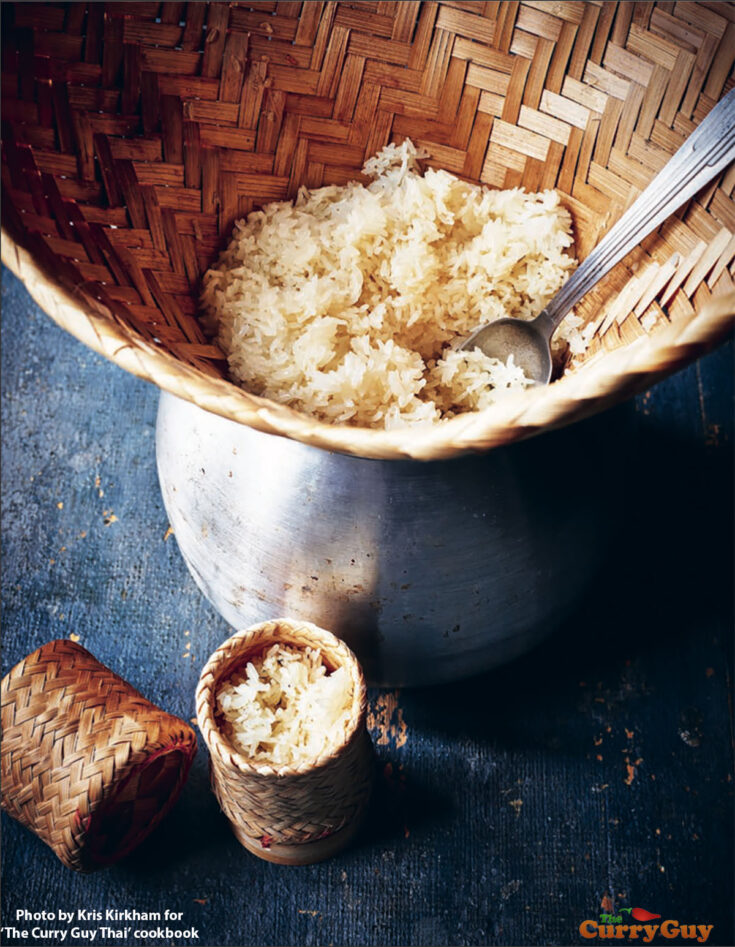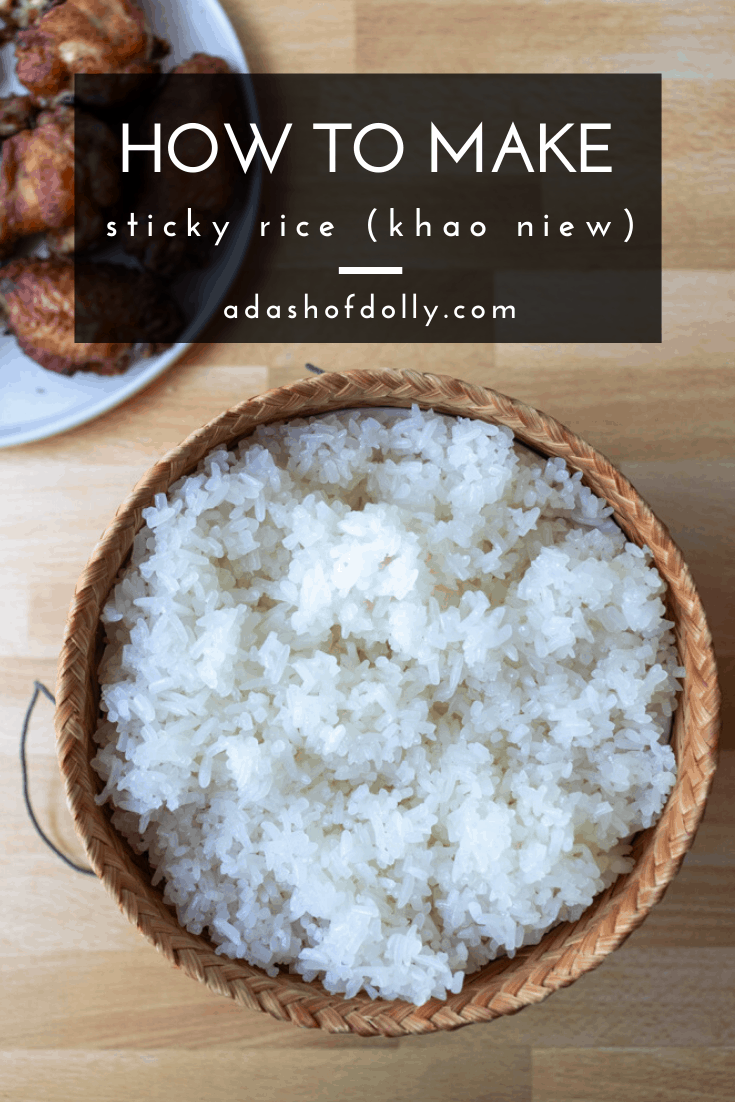How to Cook Sticky Rice: A Simple and Detailed Guide
Sticky rice, also known as glutinous rice or sweet rice, is a popular dish in many Asian cuisines. It is essential for dishes like Thai sticky rice, Lao khao niew, and Vietnamese com nep, and pairs beautifully with various savory and sweet foods. Cooking sticky rice may seem challenging at first, but with the right method and a little patience, you can make it at home with ease.
In this article, we will walk you through the step-by-step process of cooking sticky rice, provide useful tips, and answer common questions about the dish. Whether you’re new to cooking sticky rice or looking to improve your technique, this guide will give you all the information you need.

What is Sticky Rice?
Sticky rice is different from regular rice due to its high starch content, which makes it sticky when cooked. It is typically used in Southeast Asian dishes and has a unique texture that makes it perfect for dipping, wrapping, or serving alongside main courses.
Unlike regular rice, sticky rice doesn’t absorb water during cooking but instead becomes soft and chewy, holding together in a dense and sticky form.
The Best Rice for Sticky Rice
When cooking sticky rice, it’s essential to choose the right type of rice. Glutinous rice, often labeled as “sweet rice,” is the best option. This rice is grown primarily in Southeast Asia and is available in both white and purple varieties. The white glutinous rice is the most common for cooking sticky rice.
You can find this rice at most Asian supermarkets or order it online. Be sure to look for authentic sticky rice, as other types of rice will not yield the same texture and stickiness.
How to Soak Sticky Rice
The first step in cooking sticky rice is soaking the rice. Soaking the rice helps it absorb water and softens the grains, which is crucial for achieving that perfect sticky texture.
Step-by-Step Soaking Instructions:
-
Measure the Rice: Start by measuring how much sticky rice you need. A good serving size is about 1 cup of uncooked rice for two people.
-
Rinse the Rice: Place the rice in a fine-mesh strainer and rinse it under cold water. This removes excess starch, preventing the rice from becoming overly sticky.
-
Soak the Rice: Transfer the rinsed rice into a large bowl and cover it with cold water. Let it soak for at least 4 hours, or overnight for best results. The longer the rice soaks, the softer it will become.
Pro Tip: For an even better result, soak the rice in water for 12-24 hours before cooking. This helps the grains absorb more water and cook more evenly.
How to Steam Sticky Rice
The traditional way to cook sticky rice is by steaming it. This method helps the rice retain its unique chewy and sticky texture.
Step-by-Step Steaming Instructions:
-
Prepare the Steamer: Fill a large steamer pot with water, ensuring the water level is below the steamer basket. If you don’t have a dedicated sticky rice steamer, you can use a regular bamboo steamer or a fine-mesh sieve.
-
Line the Steamer: To prevent the rice from falling through the steamer basket, line it with cheesecloth or a clean kitchen towel. You can also lightly oil the cloth to make it easier to remove the rice later.
-
Steam the Rice: Once your rice is soaked and drained, transfer it into the steamer. Spread the rice out evenly to ensure it cooks uniformly. Cover the rice with a lid and steam it over medium heat for 20-30 minutes.
-
Stir the Rice: After 20 minutes, stir the rice gently to make sure it cooks evenly. Return it to the steamer and steam for another 20-30 minutes, checking periodically for doneness.
-
Check the Rice: The rice should be glossy and sticky when it is done. If the rice isn’t fully cooked, continue steaming for an additional 10 minutes.

How to Serve Sticky Rice
Sticky rice is versatile and can be served in various ways depending on the cuisine. Here are a few popular ways to enjoy it:
Pair with Grilled Meats or Fish:
In Thai cuisine, sticky rice is often paired with grilled meats like som tam (green papaya salad) or laab (spicy minced meat salad). The sticky rice serves as a perfect vehicle for soaking up the juices and flavors of these dishes.
Use in Desserts:
Sticky rice is also a great base for sweet dishes. One of the most famous is mango sticky rice, a delightful combination of sweet sticky rice and ripe mango. To make it, simply add a touch of sugar and coconut milk to your cooked sticky rice and serve with fresh mango slices.
Wrap in Banana Leaves:
Another traditional method is to wrap sticky rice in banana leaves, which imparts a subtle aroma and keeps the rice moist. This method is common in many Southeast Asian countries.
Tips for Perfect Sticky Rice
-
Avoid Overcooking: Overcooking sticky rice can cause it to become too soft or mushy. Be sure to check the rice regularly to ensure it’s cooked to perfection.
-
Don’t Skip the Soaking: Soaking is essential for achieving the ideal texture. If you skip this step, the rice may end up too hard or unevenly cooked.
-
Use a Steamer: While some methods use boiling water, steaming is the best way to maintain the rice’s sticky texture. A steamer allows the rice to cook evenly without becoming too wet.
-
Serve Immediately: Sticky rice is best served right after it’s cooked. If you need to store leftovers, wrap them tightly in plastic wrap and reheat them by steaming.
Frequently Asked Questions
Can I use a rice cooker to cook sticky rice?
While it’s possible to use a rice cooker, traditional steaming will give you the best texture. If you choose to use a rice cooker, select the glutinous rice setting (if available) and add a little extra water.
How can I make sticky rice sweeter?
To make sticky rice sweeter, add coconut milk and sugar to the rice after it’s cooked. Stir it in and allow the rice to absorb the sweetness for a few minutes before serving.
Can I use regular rice for sticky rice?
Regular rice won’t give you the same texture as sticky rice. It’s best to use glutinous rice for an authentic sticky rice experience.
Conclusion
Cooking sticky rice at home may take a little patience, but the results are well worth the effort. With the right technique, you can create perfectly sticky rice every time. Whether you’re making a savory dish or a sweet dessert, sticky rice is a versatile and delicious addition to your meal.
Remember, the key to perfect sticky rice lies in the soaking and steaming process. Follow these steps, and you’ll be able to enjoy sticky rice in no time.

For more tips on cooking and automating your food preparation processes, check out our automation tools at DUYTHIN.DIGITAL, where we offer automation solutions for a variety of platforms!
